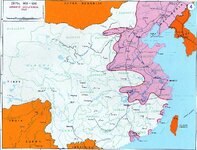Admiral Beez
Major
If with continued US assistance, and German and Allied acceptance the Young Plan, the Weimar Republic lasts through the Great Depression and beyond, will reduced rearmament in Britain leave the Empire unprepared to face Japan in 1941? There's still Mussolini's Italy to deal with in North Africa and Ethiopia, and the civil war in Spain, so Britain won't totally neglect its military, but the huge re-armament programs of 1936-1940 will assuredly be impacted, as will Churchill's chances of becoming PM.
In 1919 the British government enacted the ten year rule, "a guideline, that the armed forces should draft their estimates on the assumption that the British Empire would not be engaged in any great war during the next ten years. In 1928 Churchill, as Chancellor of the Exchequer, successfully urged the Cabinet to make the rule self-perpetuating. There were very large cuts in defence spending as a result of this rule, with defence spending going down from £766 million in 1919–20, to £189 million in 1921–22, to £102 million in 1932. The Ten Year Rule was abandoned by the Cabinet on 23 March 1932, but this decision was countered with: this must not be taken to justify an expanding expenditure by the Defence Services without regard to the very serious financial and economic situation."
Japan may not appear to be a big threat until its successful invasion of China from 1937 onwards, so Tokyo's aspirations may not drive British re-armament. Though as they watch IJN expansion; Australia, NZ, Malaya, Burma and India may be crying out for defences. An expansionist Japan will need to consider facing off against an undistracted if less well armed Britain, France and Netherlands.
In 1919 the British government enacted the ten year rule, "a guideline, that the armed forces should draft their estimates on the assumption that the British Empire would not be engaged in any great war during the next ten years. In 1928 Churchill, as Chancellor of the Exchequer, successfully urged the Cabinet to make the rule self-perpetuating. There were very large cuts in defence spending as a result of this rule, with defence spending going down from £766 million in 1919–20, to £189 million in 1921–22, to £102 million in 1932. The Ten Year Rule was abandoned by the Cabinet on 23 March 1932, but this decision was countered with: this must not be taken to justify an expanding expenditure by the Defence Services without regard to the very serious financial and economic situation."
Japan may not appear to be a big threat until its successful invasion of China from 1937 onwards, so Tokyo's aspirations may not drive British re-armament. Though as they watch IJN expansion; Australia, NZ, Malaya, Burma and India may be crying out for defences. An expansionist Japan will need to consider facing off against an undistracted if less well armed Britain, France and Netherlands.
Last edited:

